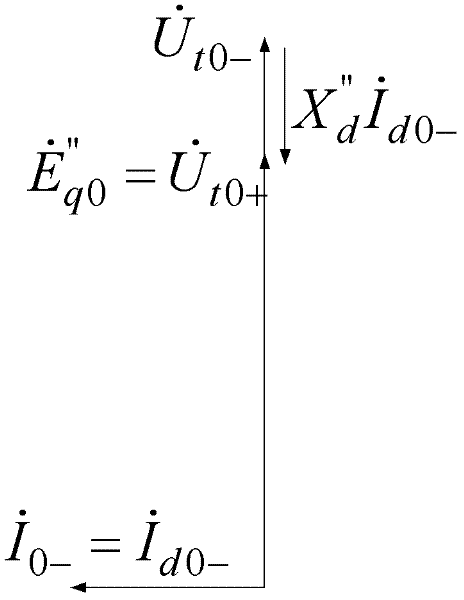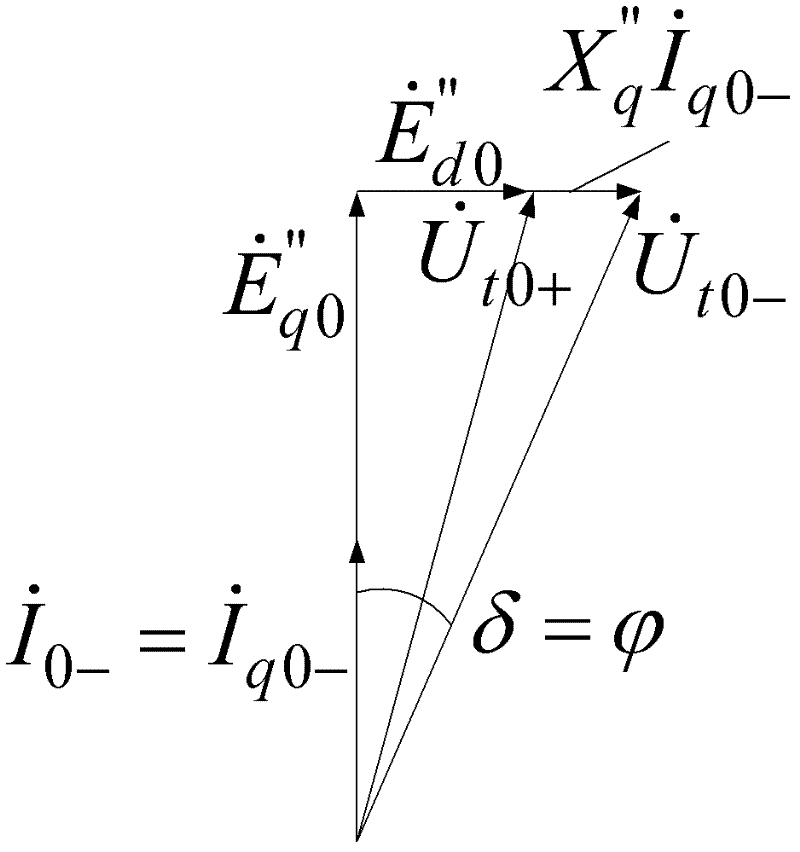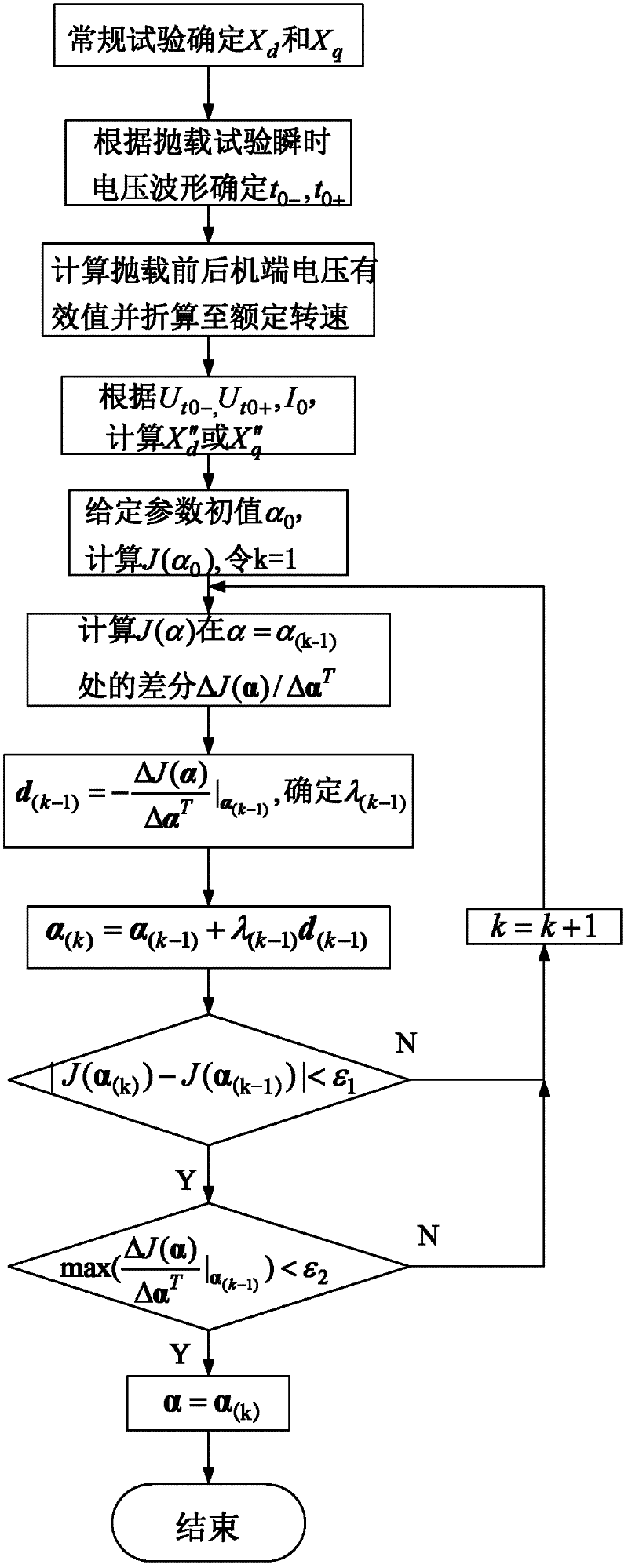Method for identifying practical parameters of synchronous generator on basis of load rejection test and numerical difference
A synchronous generator, numerical difference technology, applied in the control of generators, motor generator control, electronic commutation motor control, etc., can solve the problems of inapplicability to self-shunt generators, inability to consider the impact, etc.
- Summary
- Abstract
- Description
- Claims
- Application Information
AI Technical Summary
Problems solved by technology
Method used
Image
Examples
Embodiment Construction
[0033]The specific implementation manners of the present invention will be further described in detail below in conjunction with the accompanying drawings.
[0034] The principle of parameter identification based on the load dump test is: suddenly tripping the stator side switch (tripping) under appropriate operating conditions, taking into account the changes in the excitation voltage and unit speed after throwing, combined with the practical model of the generator A set of generator parameters that can well reflect the change process of the measured generator terminal voltage after tripping is identified. In order to facilitate identification, the load dump test is usually selected to be carried out under two types of special operating conditions, one of which is the operating condition where the q-axis current is zero (i q =0), at this time the generator has pure reactive power, which is called reactive power throwing test; the second is the operating condition where the d-...
PUM
 Login to View More
Login to View More Abstract
Description
Claims
Application Information
 Login to View More
Login to View More - R&D
- Intellectual Property
- Life Sciences
- Materials
- Tech Scout
- Unparalleled Data Quality
- Higher Quality Content
- 60% Fewer Hallucinations
Browse by: Latest US Patents, China's latest patents, Technical Efficacy Thesaurus, Application Domain, Technology Topic, Popular Technical Reports.
© 2025 PatSnap. All rights reserved.Legal|Privacy policy|Modern Slavery Act Transparency Statement|Sitemap|About US| Contact US: help@patsnap.com



